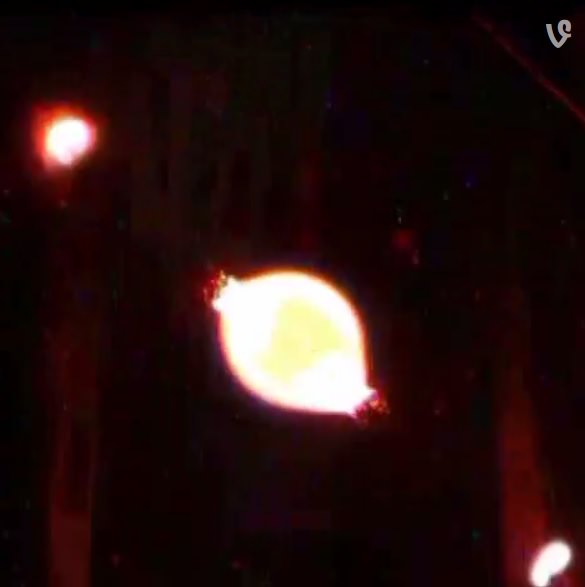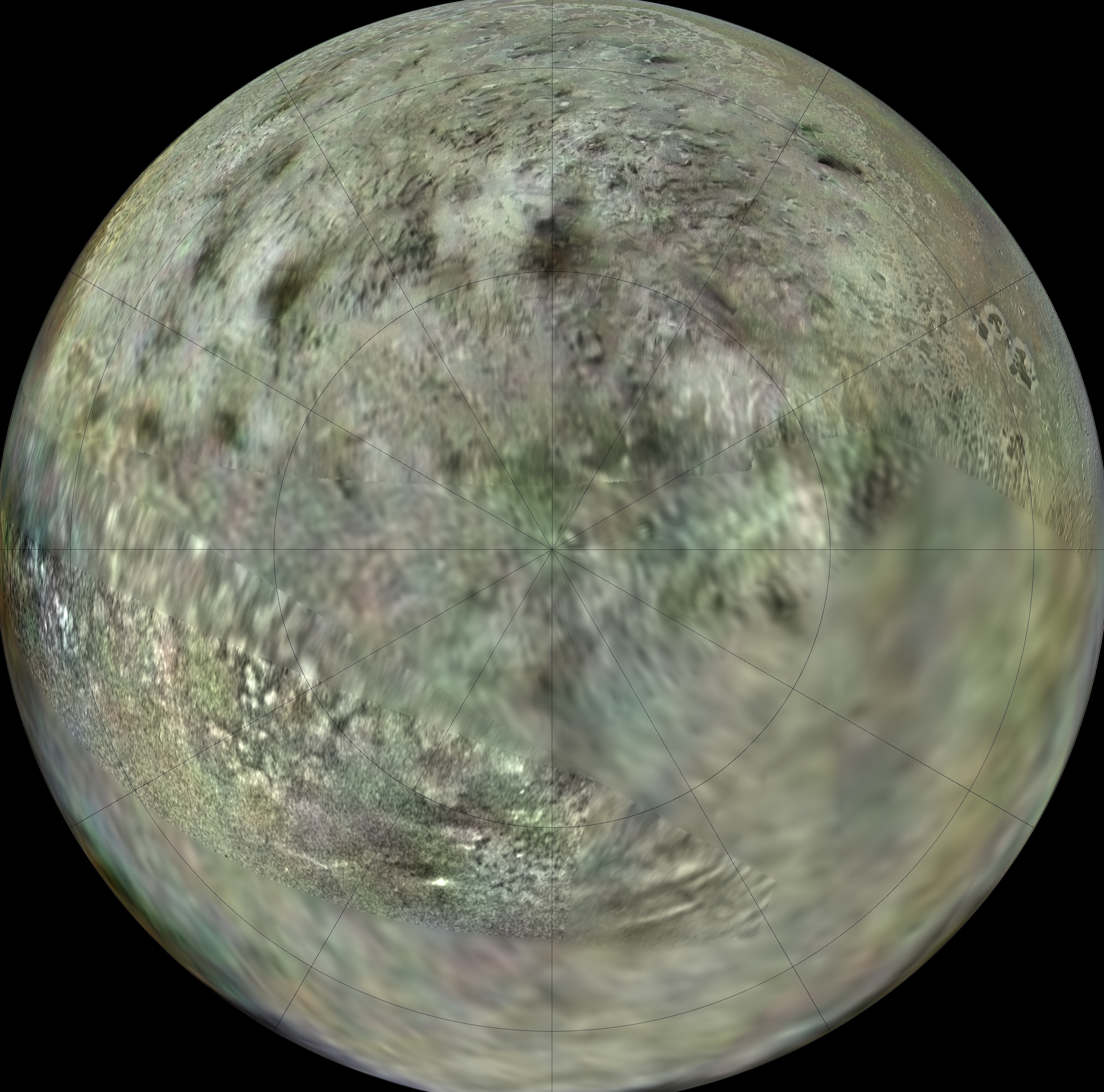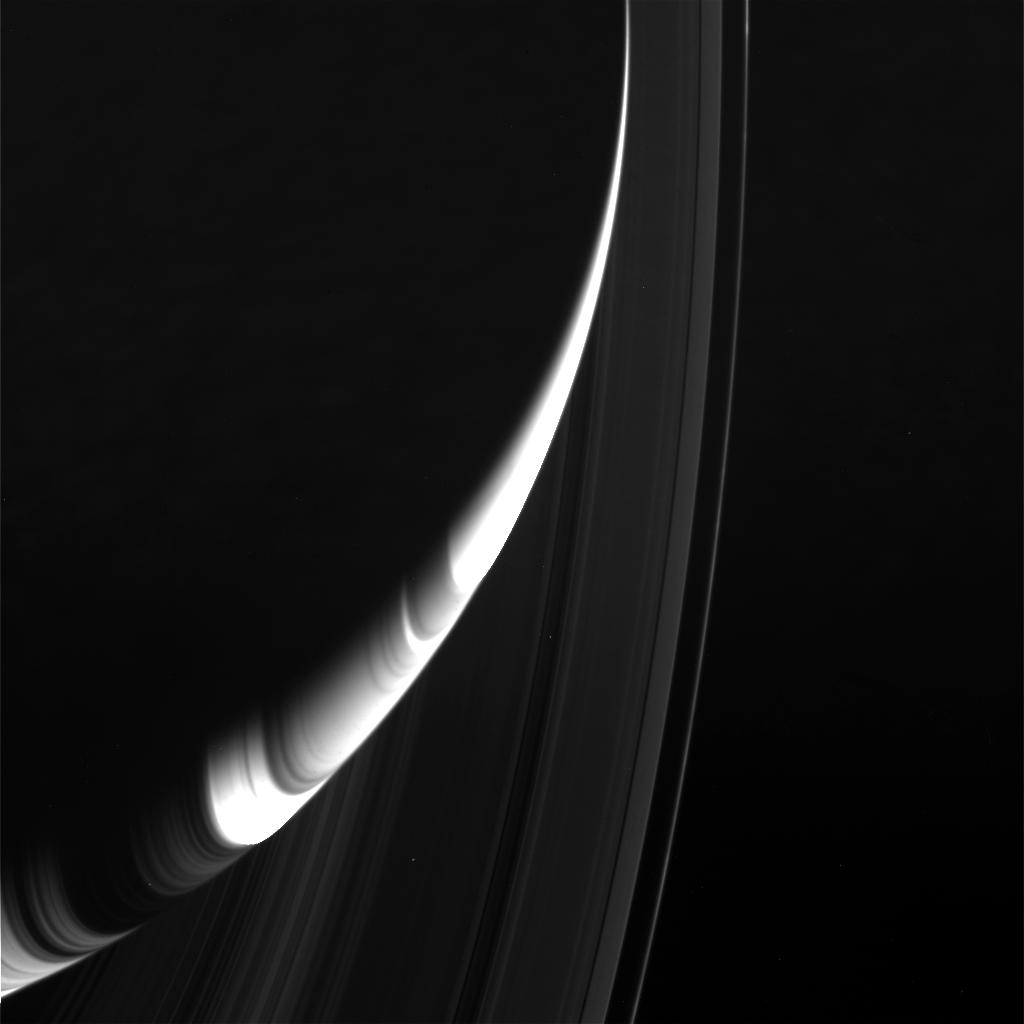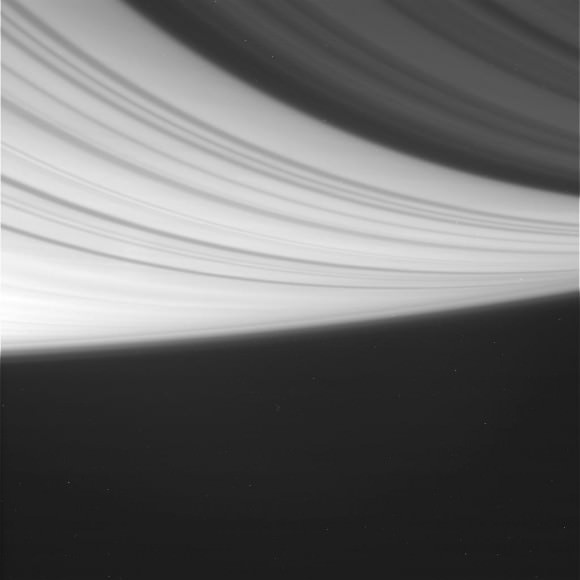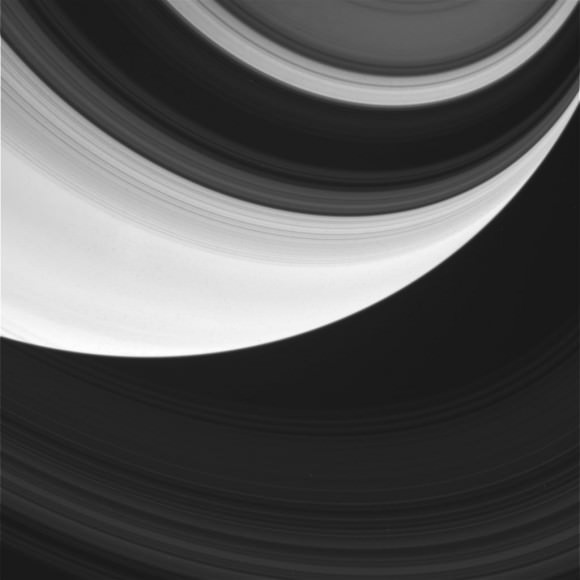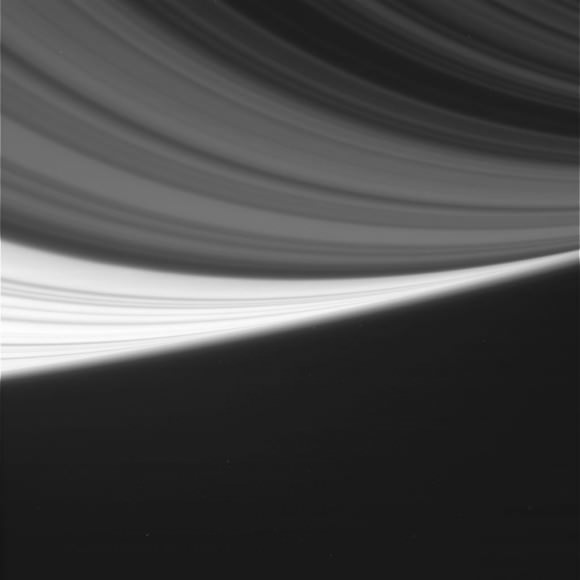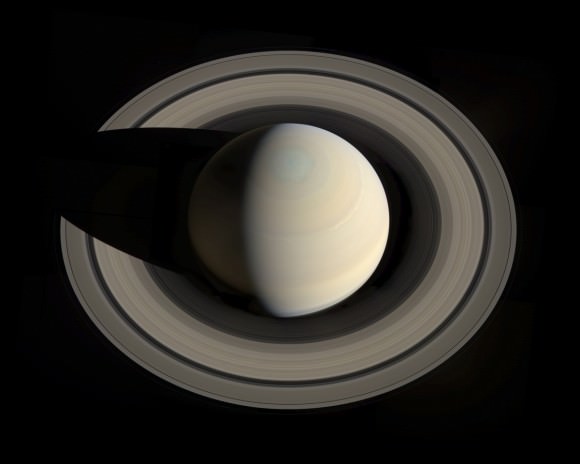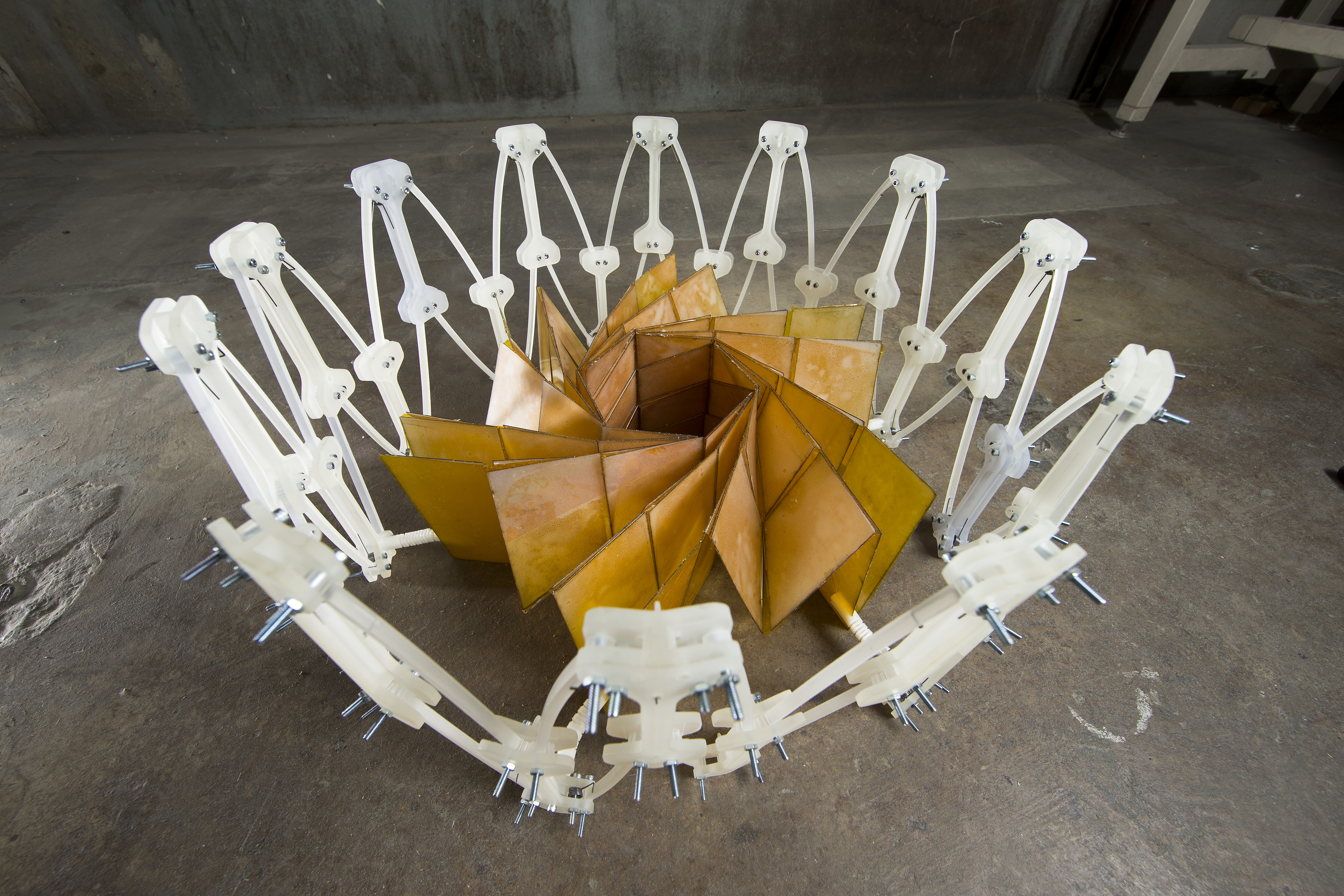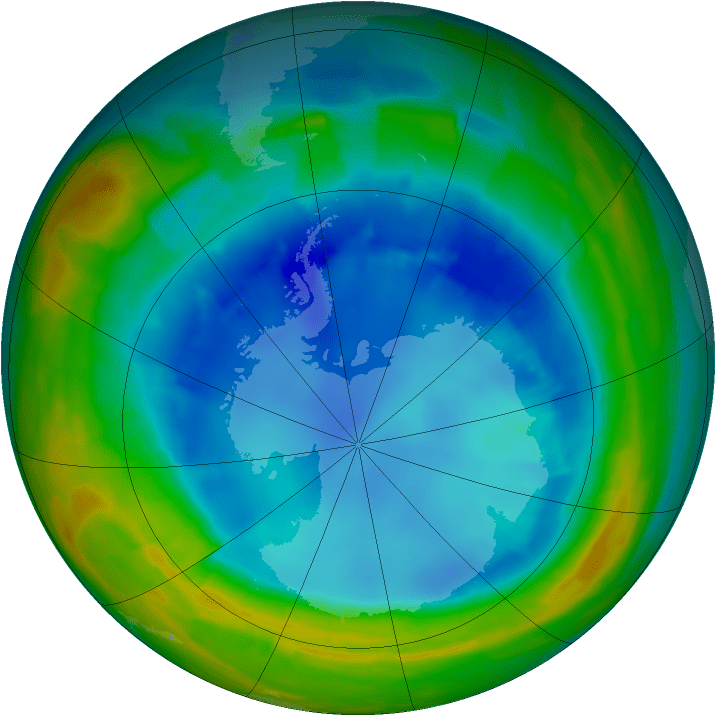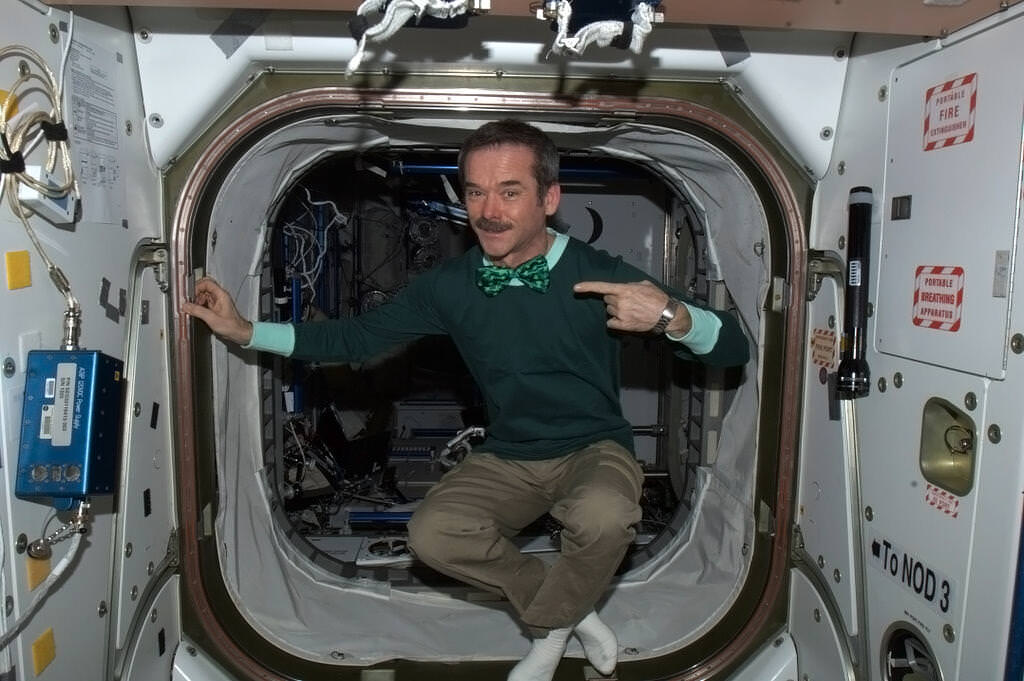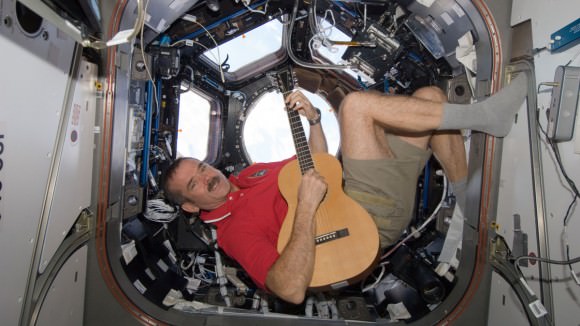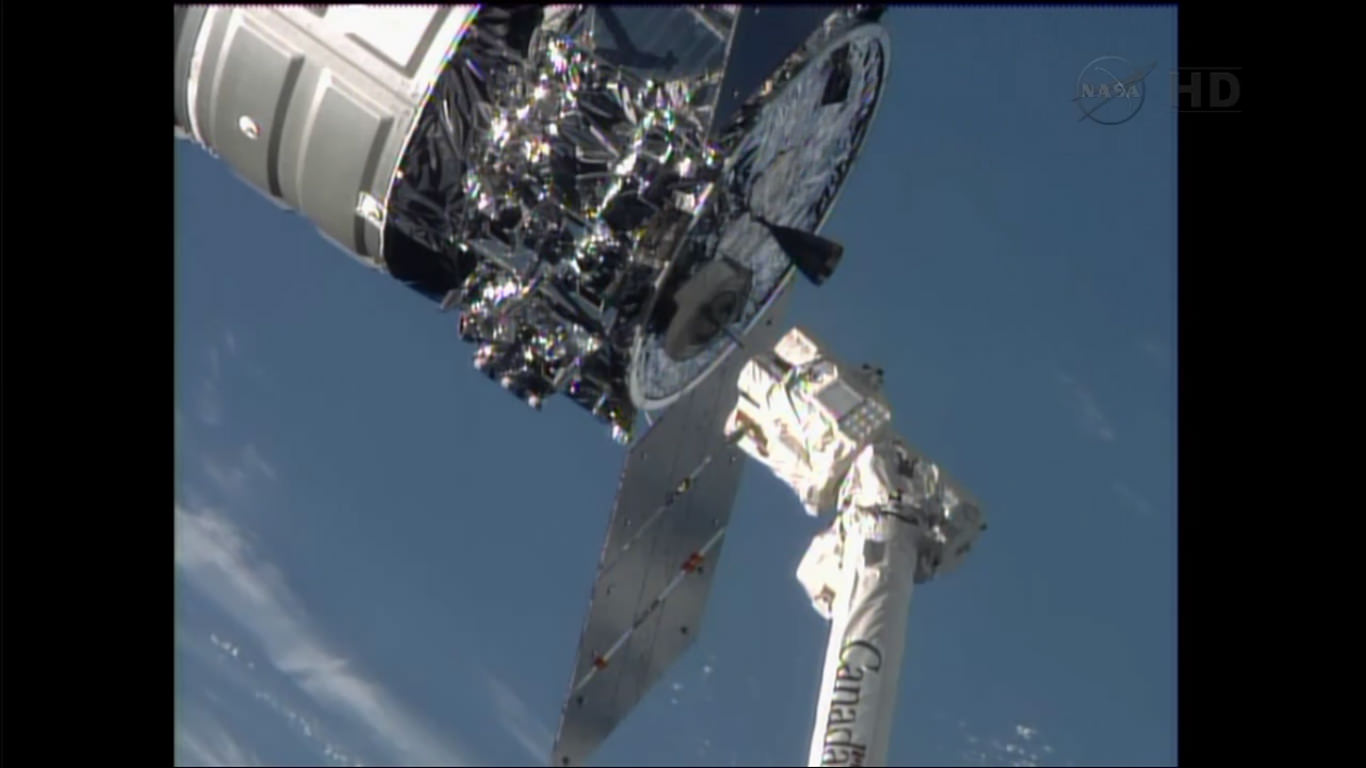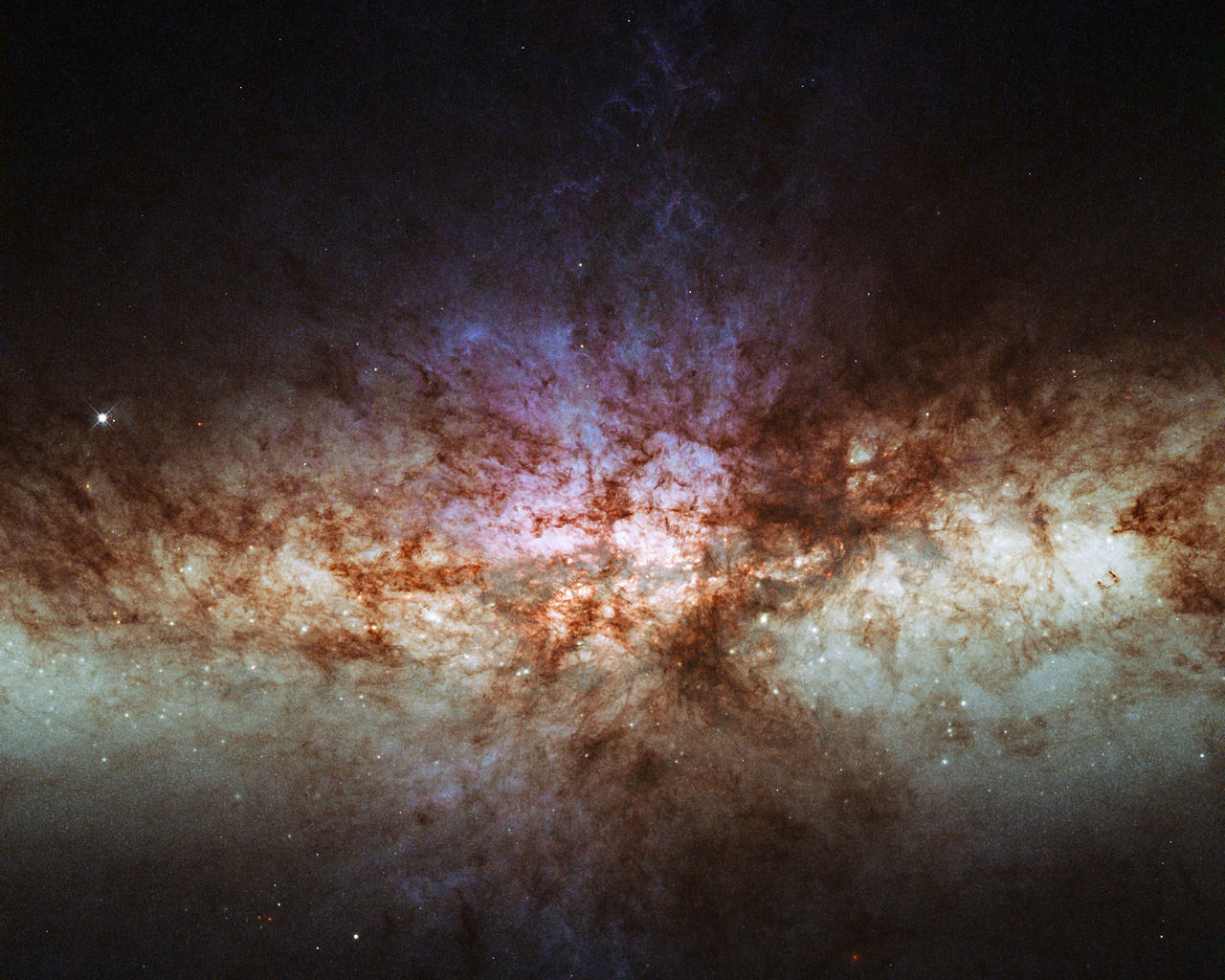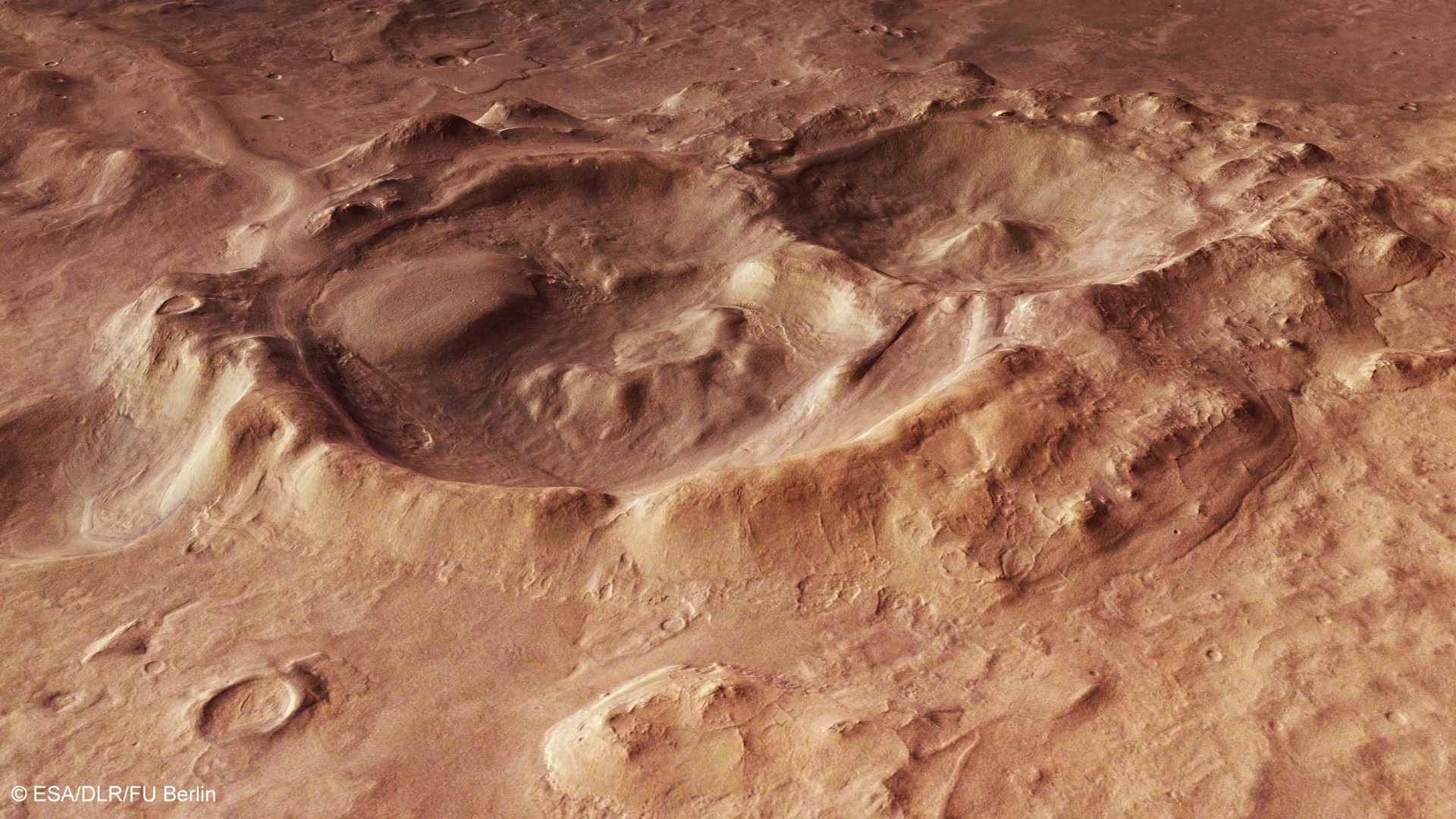Talk about recycling! Twenty-five years after Voyager 2 zinged past Neptune’s moon Triton, scientists have put together a new map of the icy moon’s surface using the old data. The information has special relevance right now because the New Horizons spacecraft is approaching Pluto fast, getting to the dwarf planet in less than a year. And it’s quite possible that Pluto and Triton will look similar.
Triton has an exciting history. Scientists believed it used to be a lone wanderer until Neptune captured it, causing tidal heating that in turn created fractures, volcanoes and other features on the surface. While Triton and Pluto aren’t twins — this certainly didn’t happen to Pluto — Pluto also has frozen volatiles on its surface such as carbon monoxide, methane and nitrogen.
What you see in the map is a slightly enhanced version of Triton’s natural colors, bearing in mind that Voyager’s sensors are a little different from the human eye. Voyager 2 only did a brief flyby, so only about half the planet has been imaged. Nonetheless, the encounter was an exciting time for Paul Schenk, a planetary scientist at the Lunar and Planetary Institute in Houston. He led the creation of the new Triton map, and wrote about the experience of Voyager 2 in a blog post.
“Triton is a near twin of Pluto,” wrote Schenk. “Triton and Pluto are both slightly smaller than Earth’s Moon, have very thin nitrogen atmospheres, frozen ices on the surface (carbon monoxide, carbon dioxide, methane and nitrogen), and similar bulk composition (a mixture of ices, including water ice, and rock. Triton however was captured by Neptune long time ago and has been wracked by intense heating ever since. This has remade its surface into a tortured landscape of overturned layers, volcanism, and erupting geysers.”
He also added speculation about what will be seen at Pluto. Will it be a dead planet, or will geology still be affecting its surface? How close will Triton be to Pluto, particularly regarding its volcanoes? Only a year until we know for sure.
Sources: NASA, Lunar and Planetary Institute, Paul Schenk

